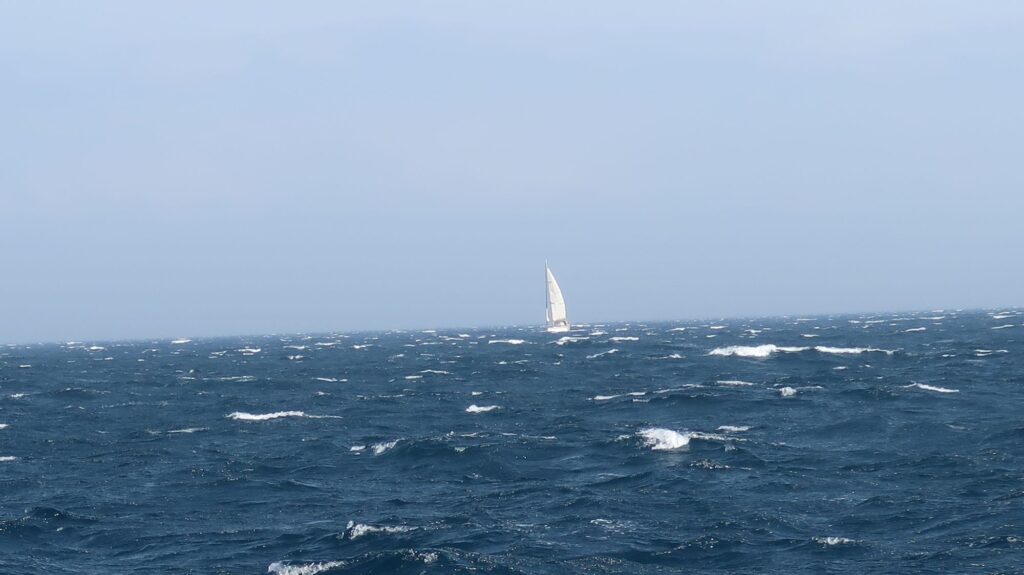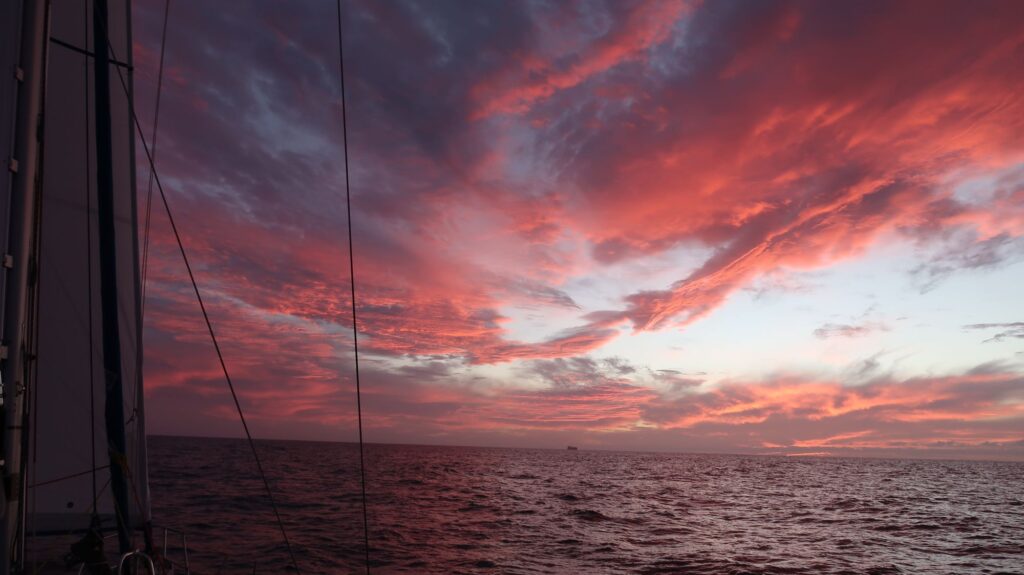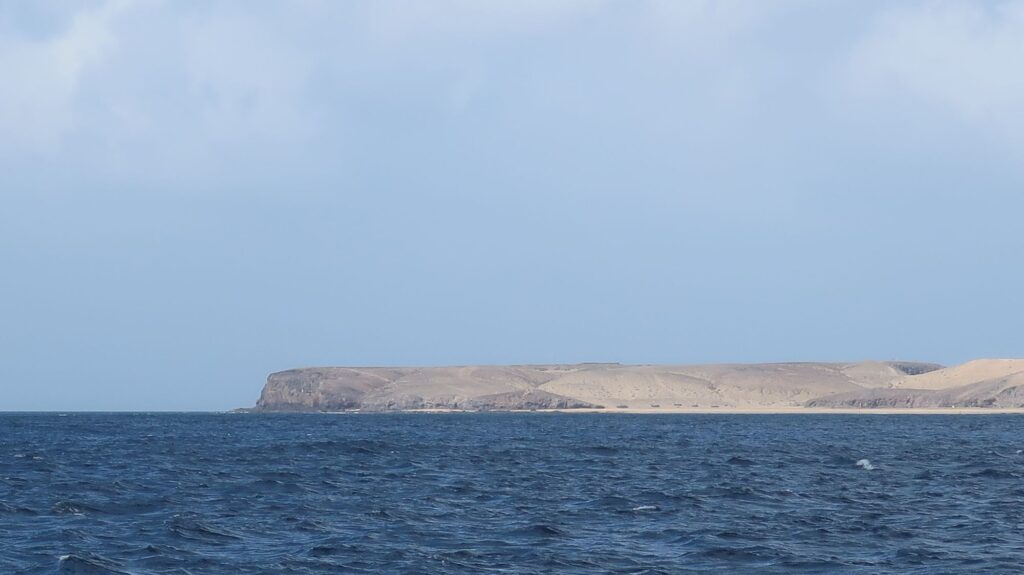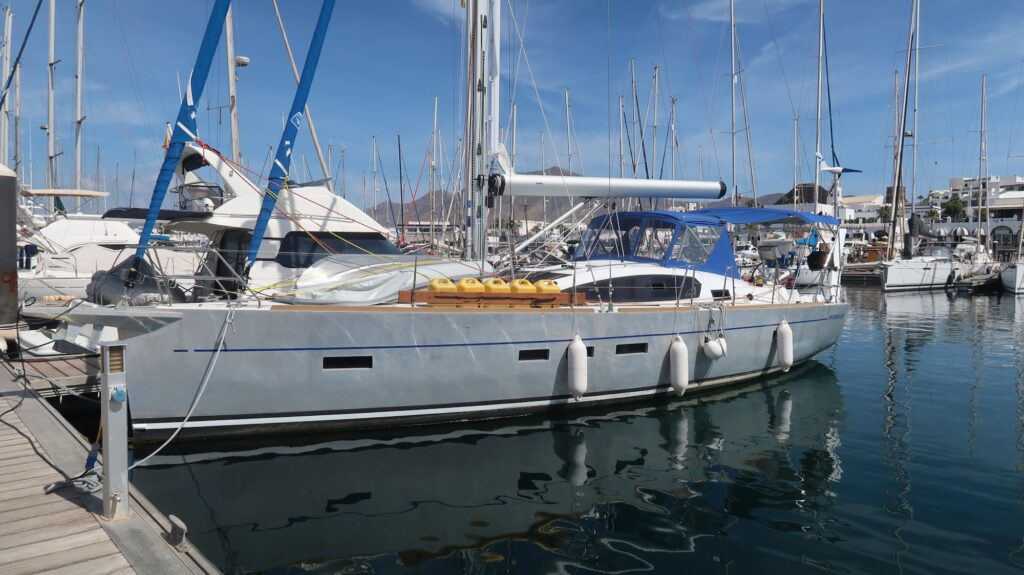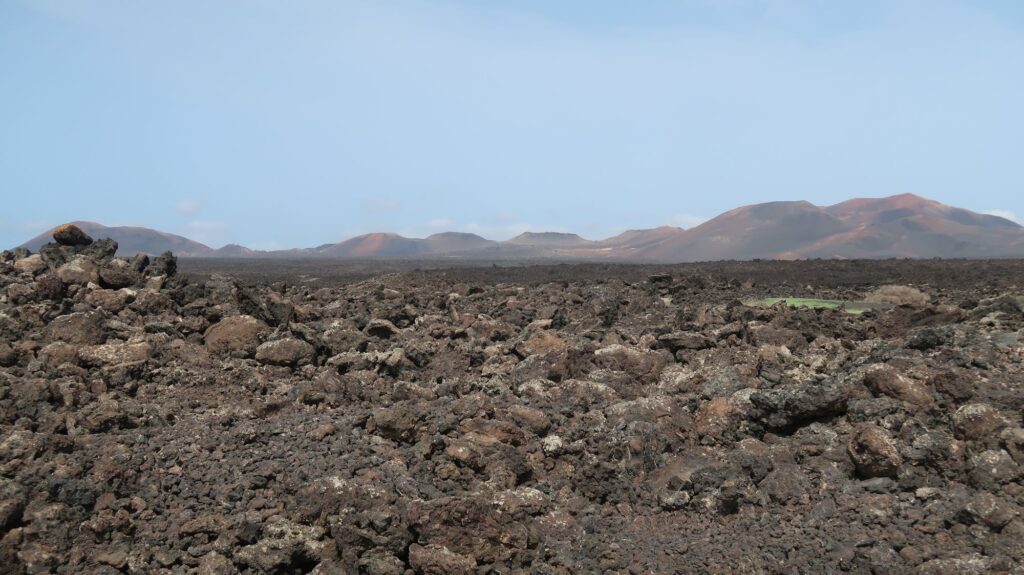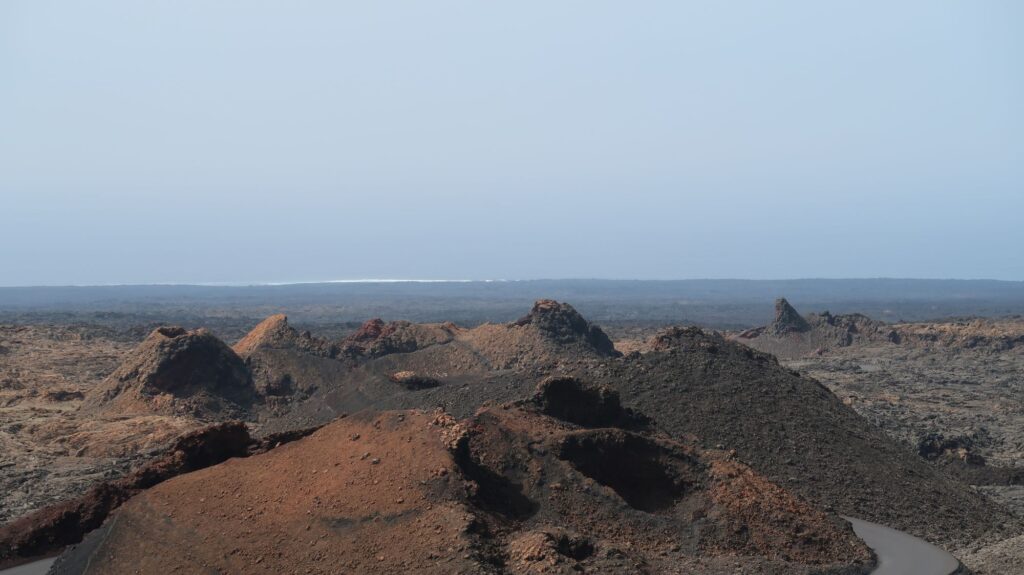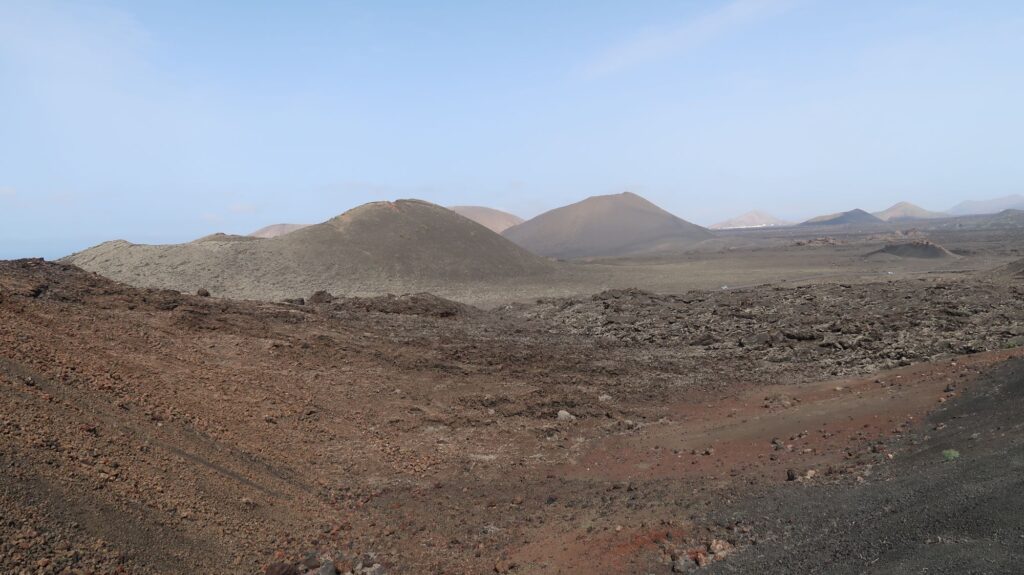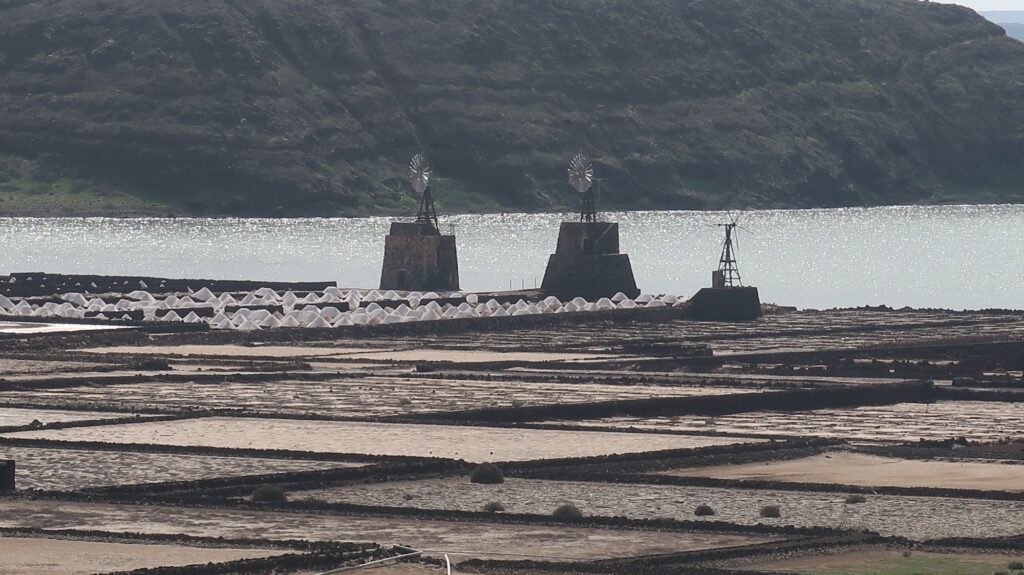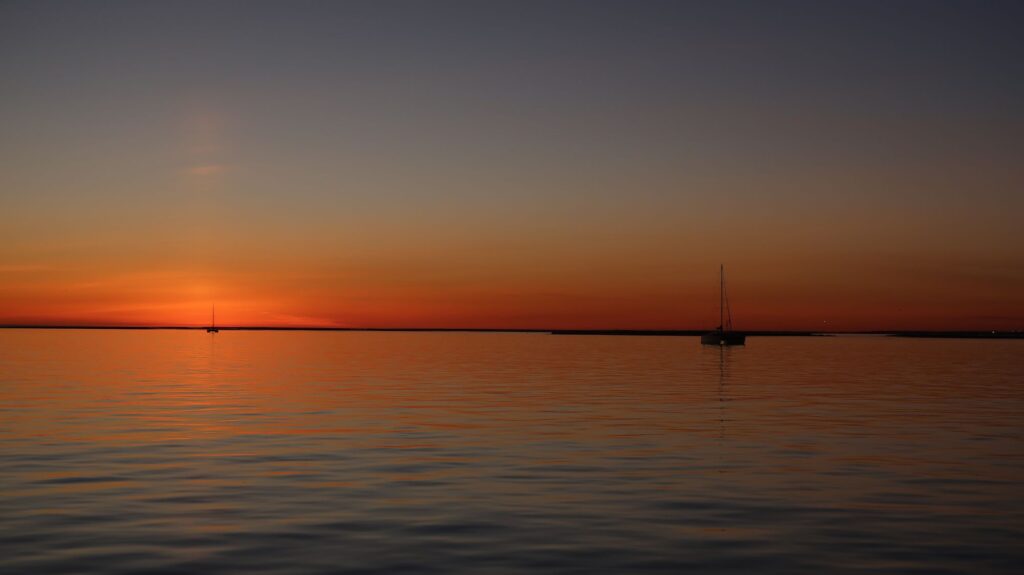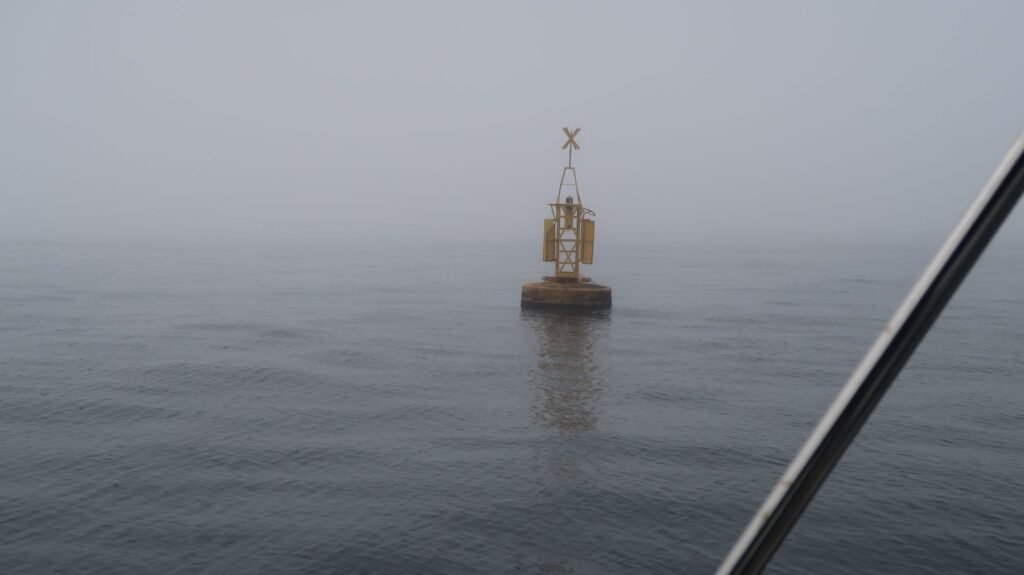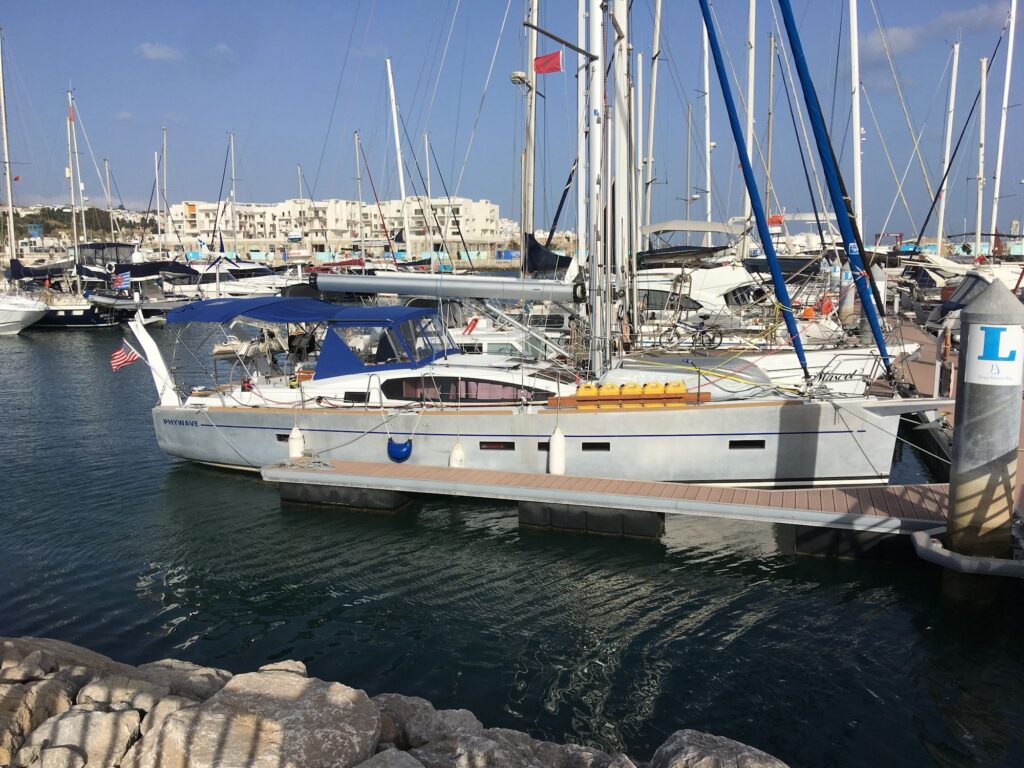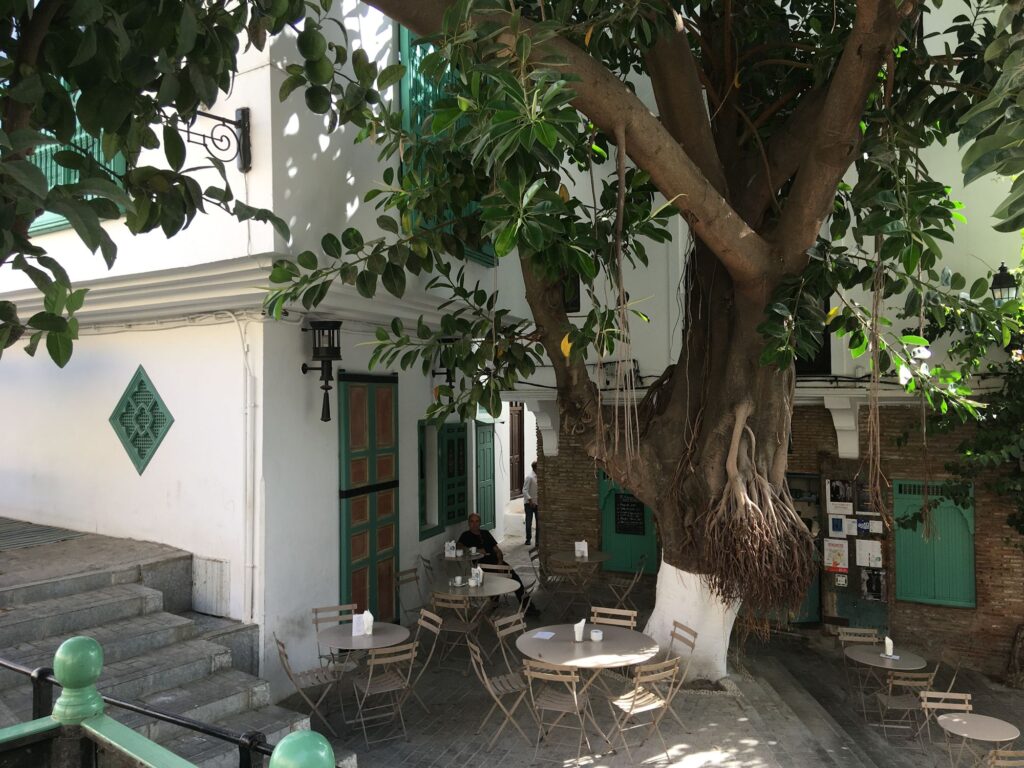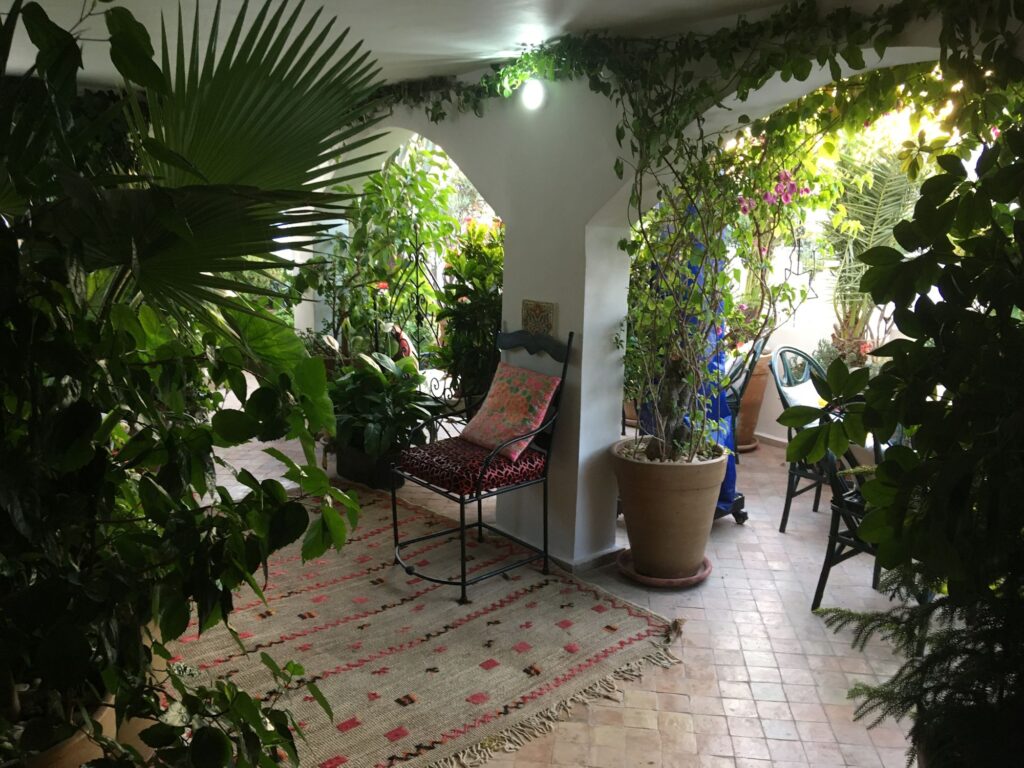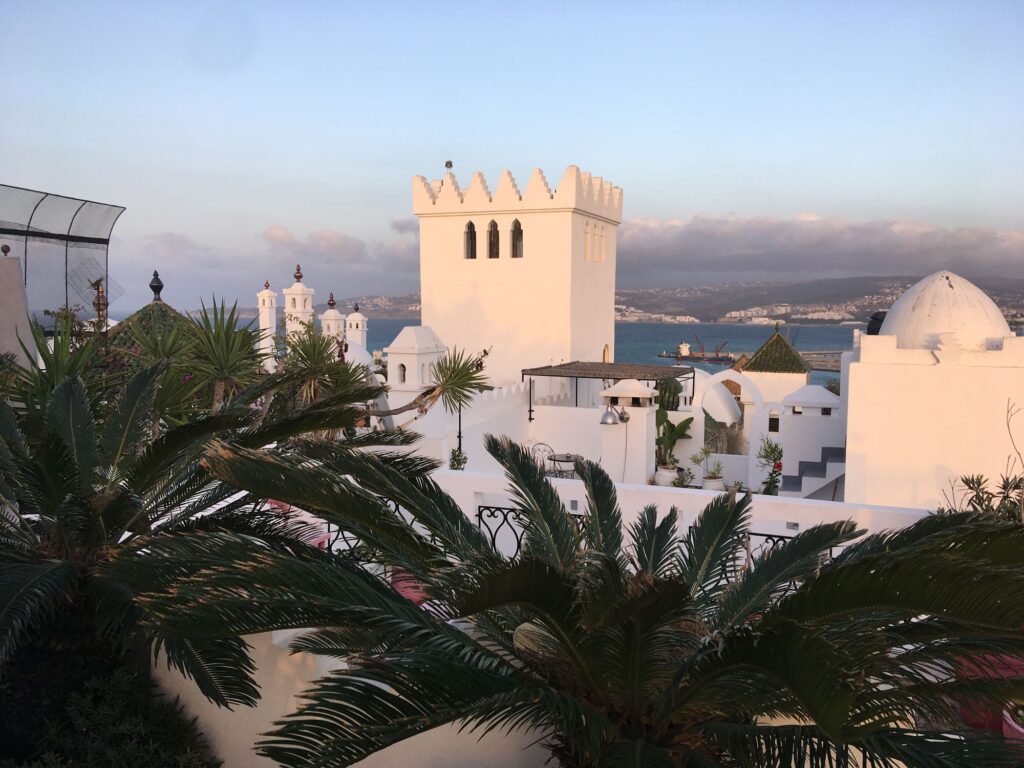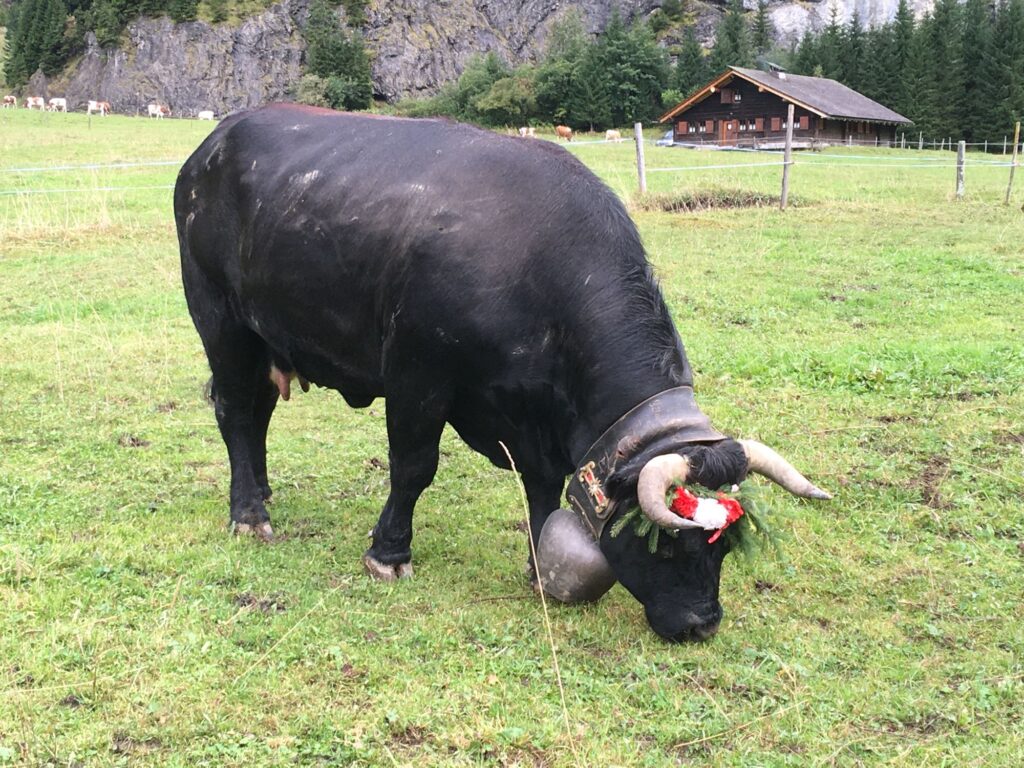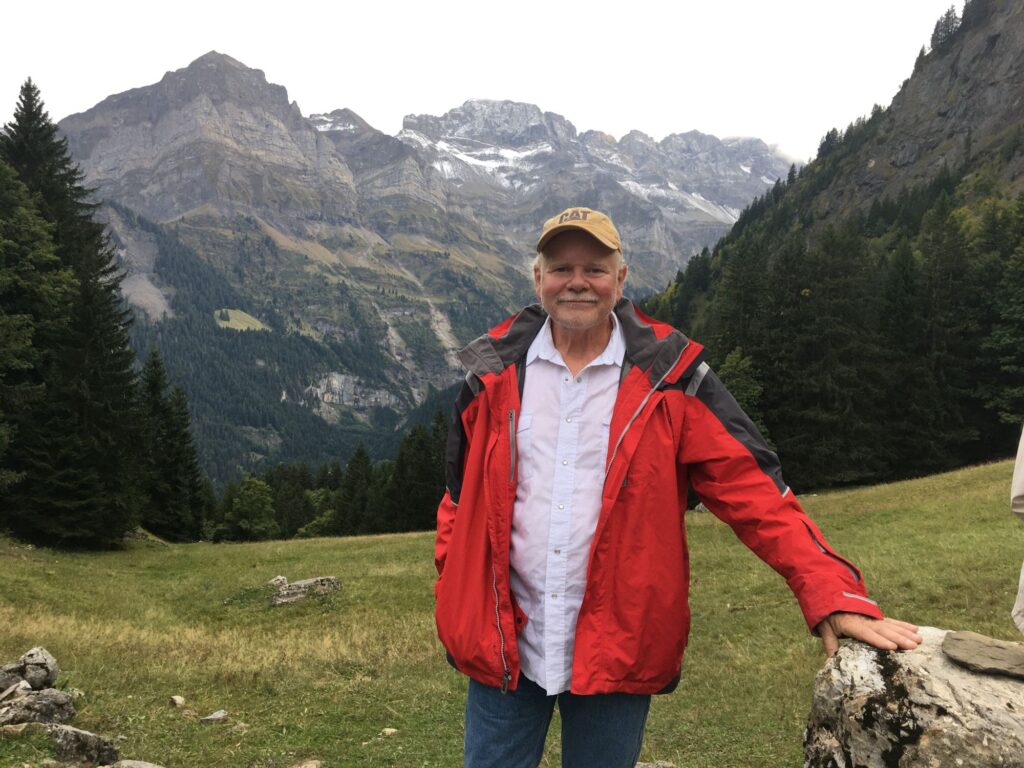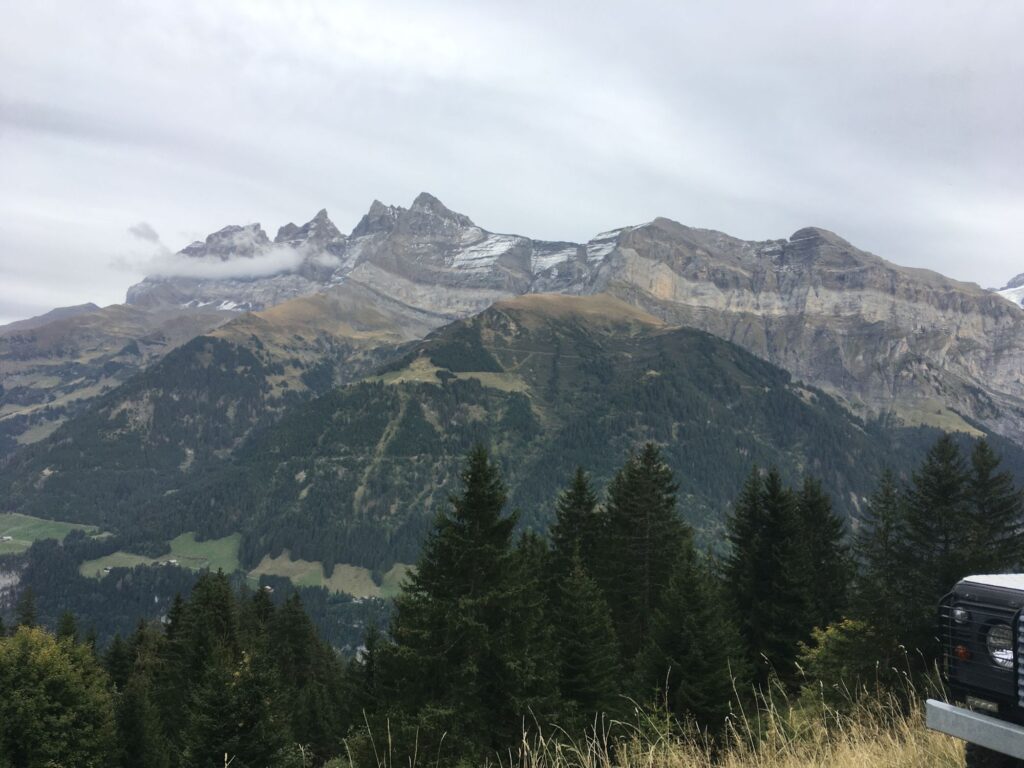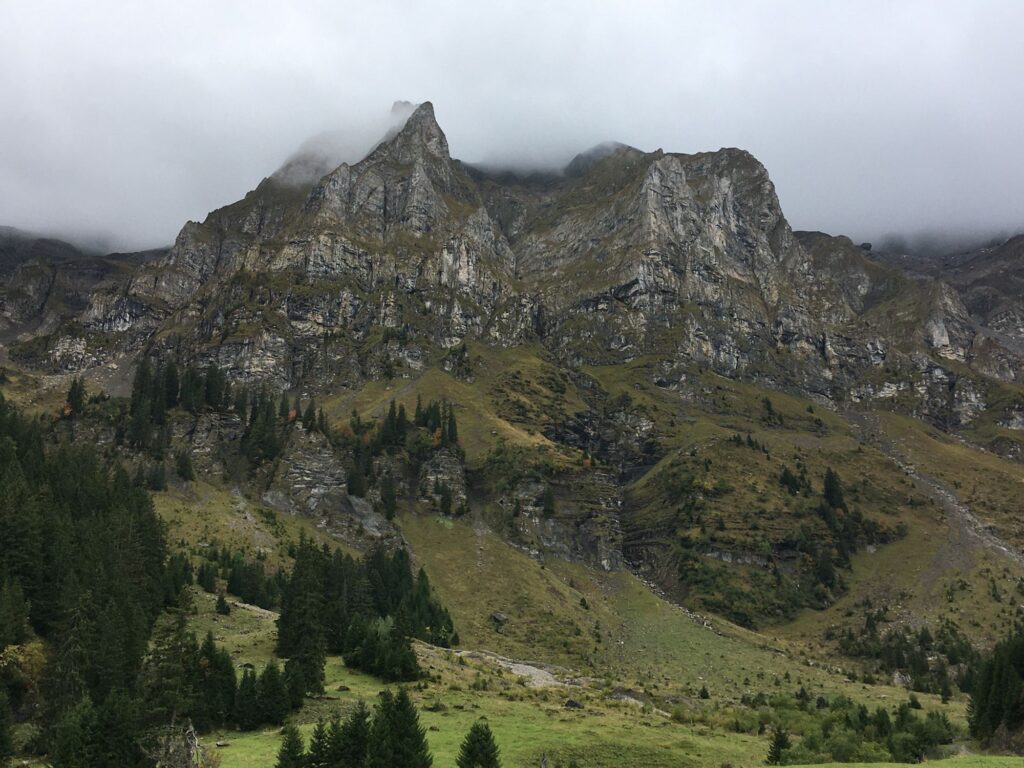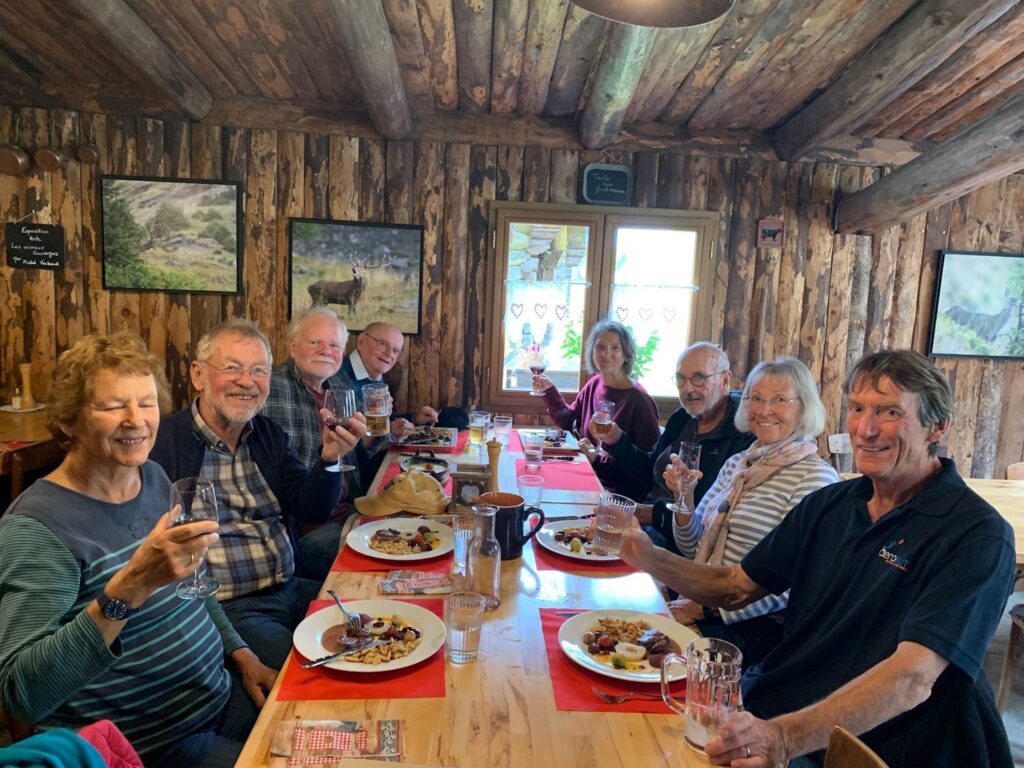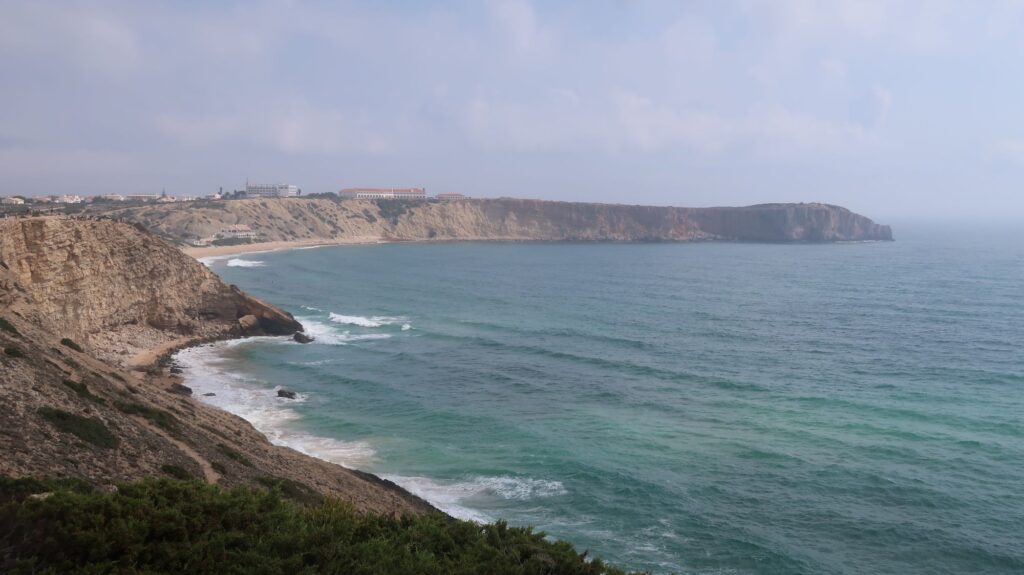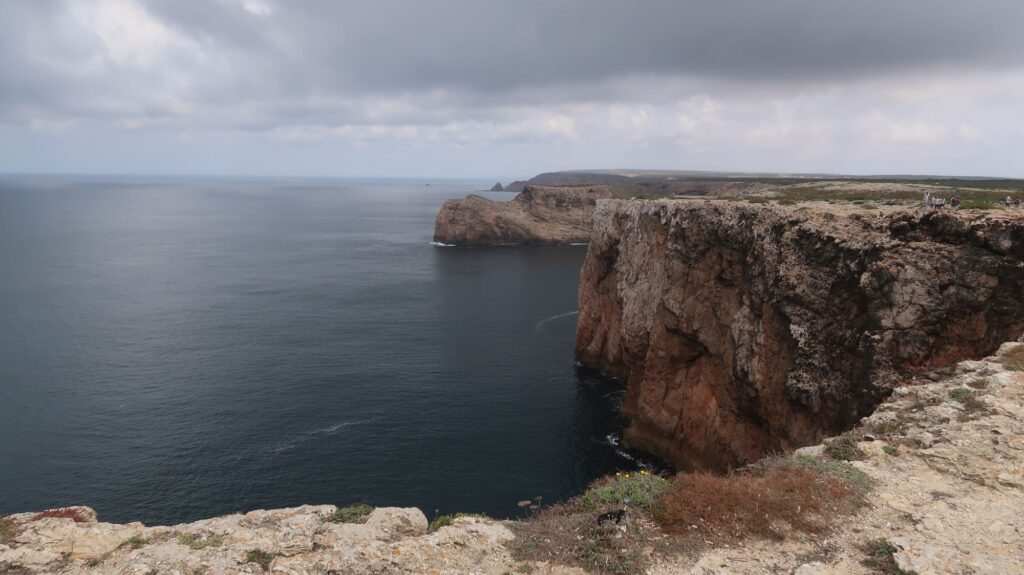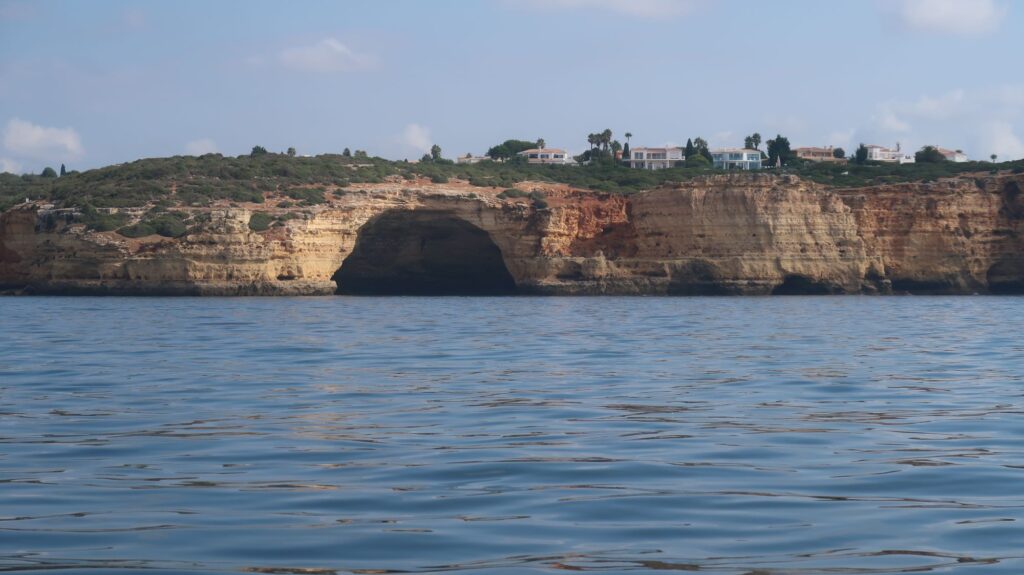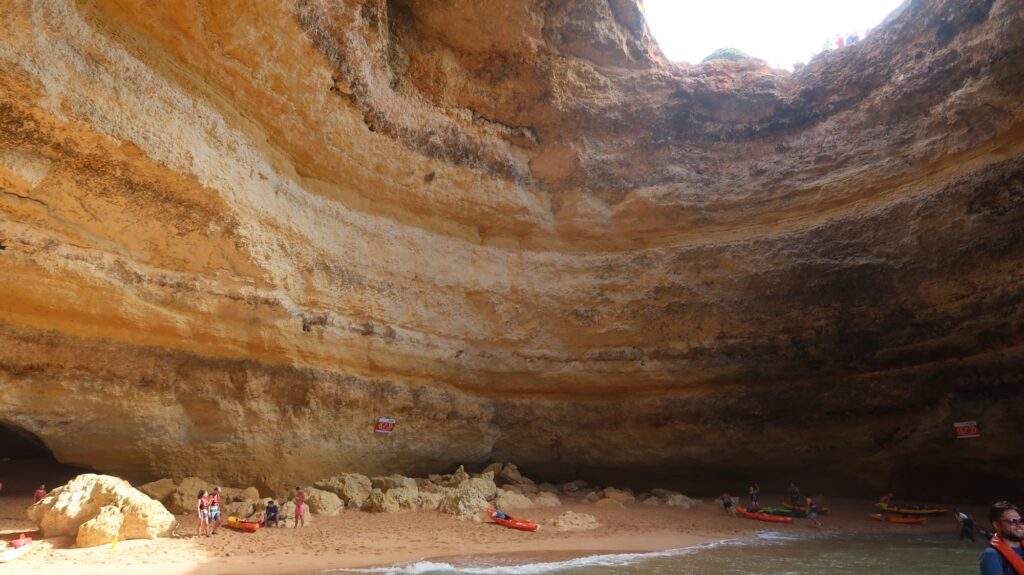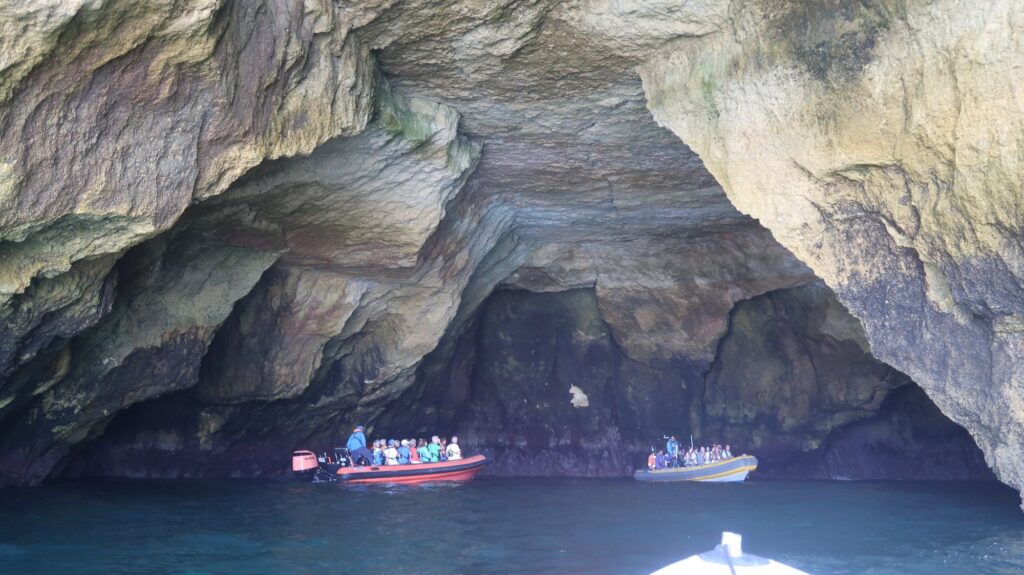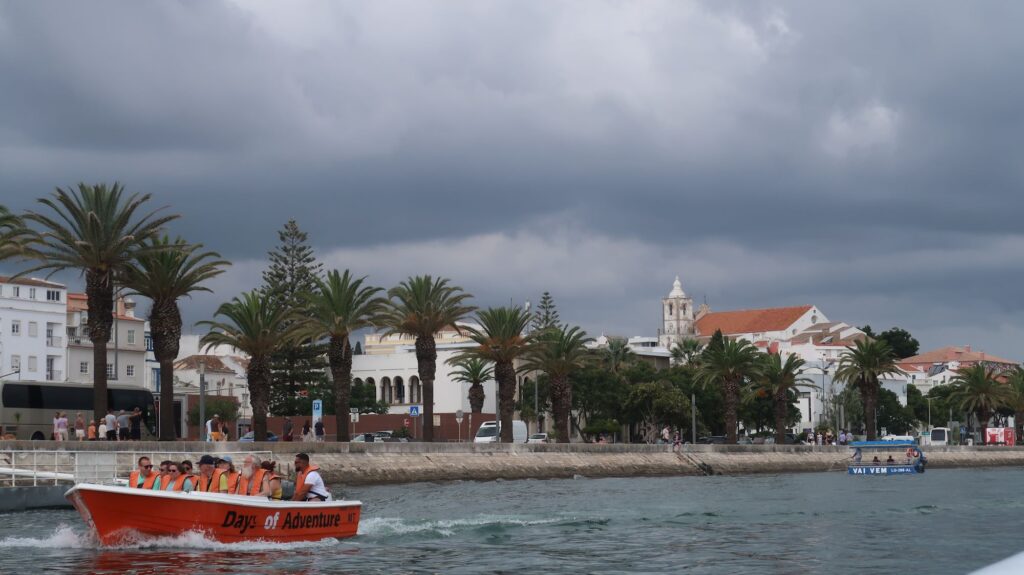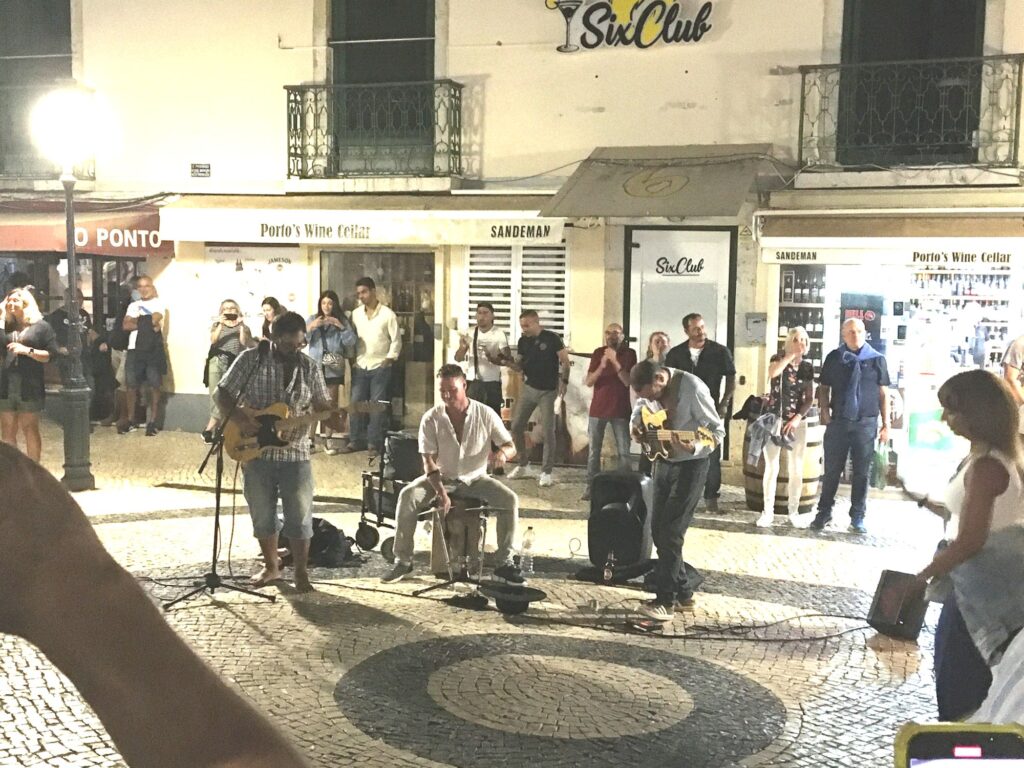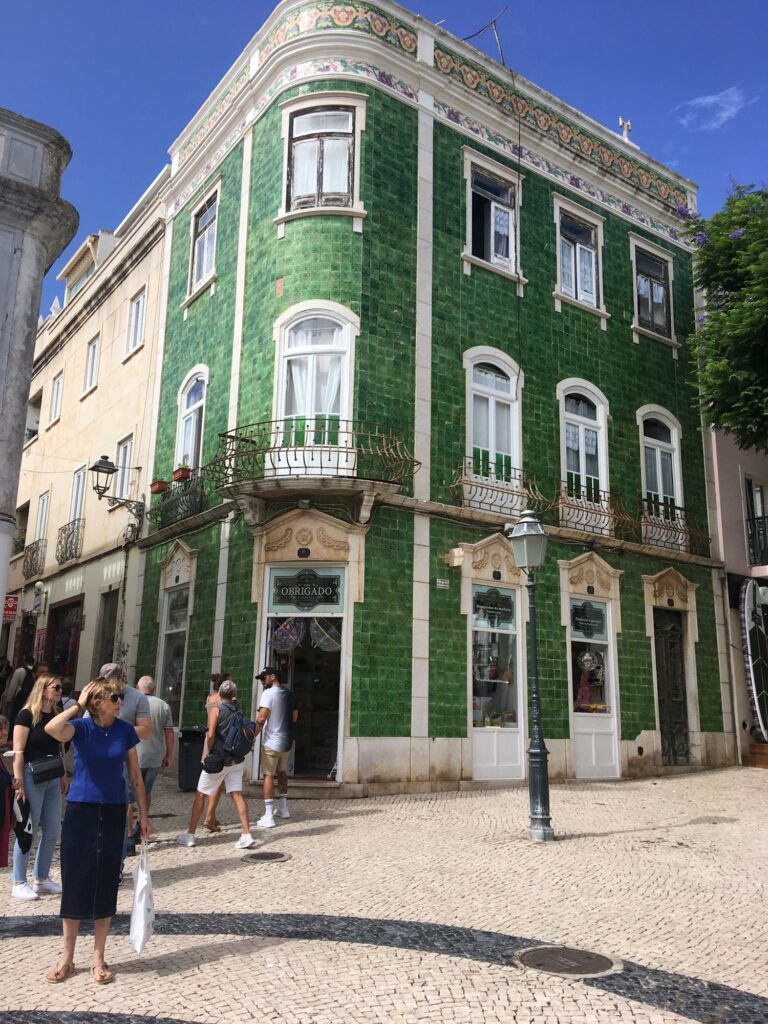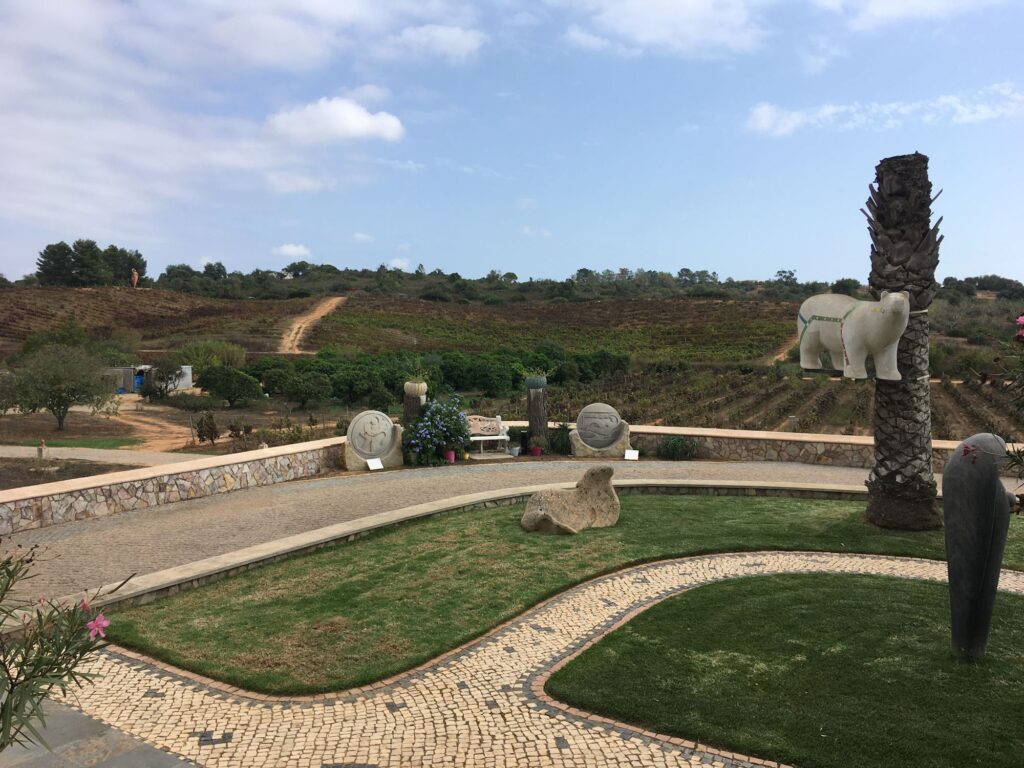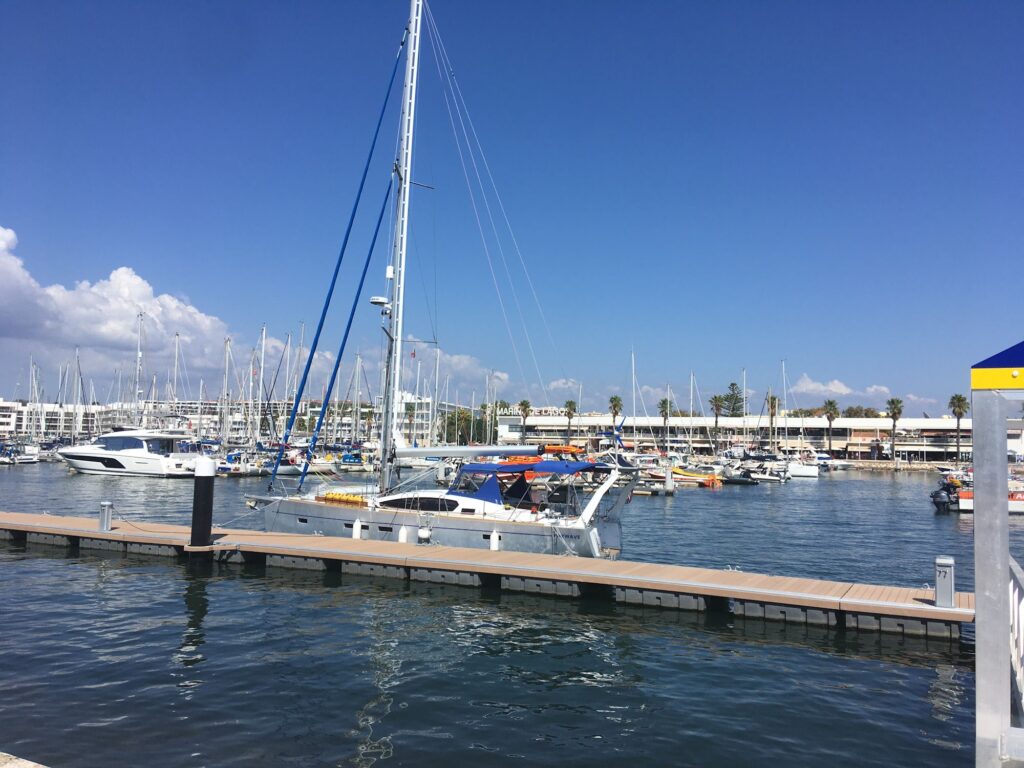I left Rubicon marina at the south end of Lanzarote Island at about 0840z on October 21, motoring SE into the channel where the winds were forecast to be stronger than on west side of Fuerteventura Island. After 5 hours of motoring the winds built sufficiently to start sailing. I’ve been sailing ever since, the engine off, generally downwind with occassional shifts that put the wind on the starboard quarter or beam. The boat actually sails better with the wind from those directions so I take advantage of it when I can.
With all the downwind sailing I decided to get more adept at setting the whiskerpole that wings out the genoa headsail to catch the most wind. As I may have mentioned in the past, it’s awkward to set mainly because I have the dinghy strapped down to the foredeck. It’s in the way when handling the whiskerpole. The whiskerpole itself is mounted on a track on the front on the mast. To set it, I have to unclip the end fitting attached to a bale at the foot of the mast, then use a line to lower the end of the pole riding on the mast track while I walk the end I just unclipped out to the bow where it can be clipped in to one of the genoa sheets at the genoa clew. With the boat rolling around this procedure can slow and unstable (the pole is free to swing around).
Outside the cockpit I’m always wearing my inflatable life vest which has a tether that can be clipped into various points on the boat to keep me from falling overboard and becoming detached from the boat. The grab bars, granny bars (around the mast) and pulpit are the best places to clip in but going forward to the bow my only options are the jacklines running the length of the boat. These lines are strong but are not very taut so a fall overboard clipped into a jackline would likely leave me dragging in the water along side the boat.
When you’re sailing single-handed there is no man overboard drill. Even though I have a waterproof PLB in a pocket on the life vest, falling overboard and becoming detached from the boat while far from land or other boats would pretty much be the end. So, to invoke a famous line from the movie “Apocalyse Now” – “Don’t get out of the boat”.
Once the pole is clipped into the genoa sheet it’s then a simple matter to return to the cockpit, release the genoa furling line, and then pull out the sheet and trim it to position the poled-out sail the way you want. The pole is great at keeping wind in the sail as the boat roles with passing seas.
Jibing (or gybing) the boat means turning the boat so the wind is coming from the other side of the stern, but still sailing downwind. Moving the mainsail boom to the
other side is one task I’ve mentioned before. It must be done in stages to keep the boom from slamming across the boat. I’ve got a boom brake which prevents that.
Moving the whiskerpole over to the other side is a challenge because I have a staysail, a second forestay aft of the main forestay where the genoa is furled. When initially setting the whiskerpole I have to choose which side of the staysail I will set it on. When jibing I have to furl the genoa, go back to the bow, unclip the pole from the sheet, then go back to the mast and hoist the track end of the pole far enough up the mast so the free end will swing around behind the staysail so it’s on the other side. With the boat rolling from side-to-side, this becomes a bit of a timing game. I have to lower the track end of the pole when the boat rolls and swings the pole so it’s on the other side of the staysail. If the dinghy weren’t there I could more easily walk the free end to the other side. Anyway, once the pole is on the correct side of the staysail the procedure involved is the same as described above.
Given the steps and work involved in jibing, I try to keep sailing with the wind on the starboard or port side of the stern as long as possible. With wind direction constantly shifting it could get a little crazy trying to follow all the shifts. I’m glad I’m not racing where that certainly would be an objective. Even so, over the first days I’ve averaged a boat speed of 5.2 knots. If I get a 5 kt average I’m happy; that’s 120 nm in a 24 hour day. With the genoa poled out I can get 6-7 kt boat speed with a 15-20 kt wind sailing downwind.
One reason I explained these pole-setting details is because the ocean is empty and there isn’t much else to talk about. I’ve had one group of dolphins swim by the boat a few days ago. This morning a school of flying fish came across the bow. They’ll fly for several meters just above the water before dipping back in. Of course, there have bern the usual cargo and tanker ships passing by, and commercial fishing vessels of 30 meter in length. No small fishing skiffs. I usually leave the companionway open at night. A seabird (don’t know what kind) flew into the cabin, looking for a free ride I guess. They’ll make a mess on a boat so I had to trap it under a bucket, slip the bucket lid under the bucket, then release it off the stern. Not fun in the middle of the night. I now keep the companionway closed.
My next routing decision is whether to go west of the Cape Verde Islands or through them, trying to minimize the miles I’ll have to sail through the doldrums often found in the Inter-Tropical Conversion Zone that typically is a few degrees north of the equator in the Atlantic this time of year. I’ll probably go just west then turn almost due south for Cabedelo, Brazil. There is no tropical storm activity in the forecast so no reason to stop at Mindelo to seek shelter. I’d rather just keep sailing to Brazil anyway.
